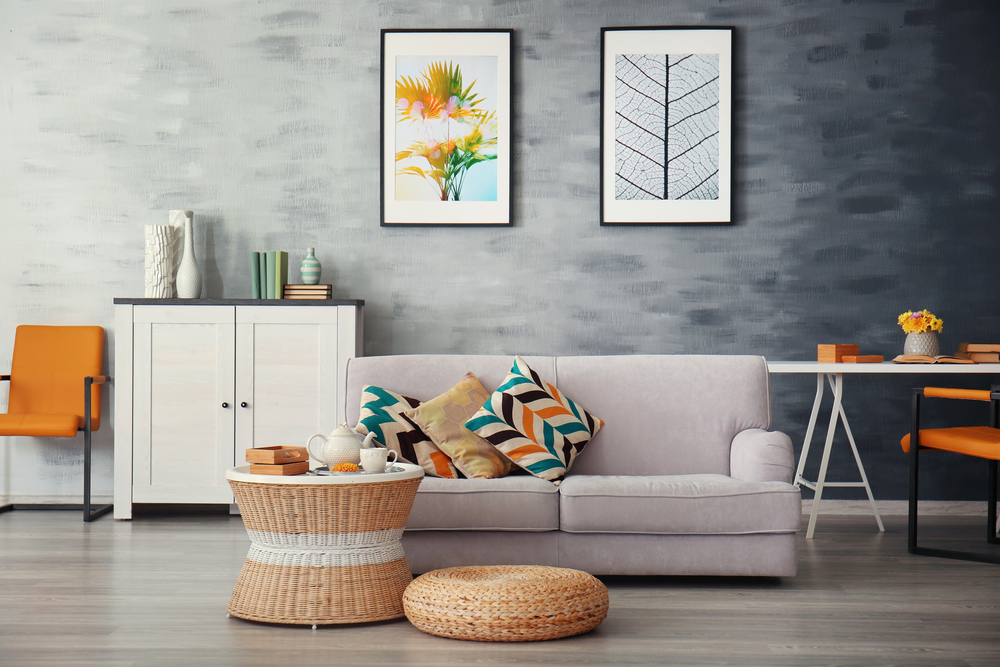|
July Newsletter - What are the most common reasons for moving home?
In this month's edition, we're taking a look at the best home design ideas from this year, whether you're preparing your property for sale or just want to spruce your home up a little.
We also reveal the most common reasons for moving home, reports suggest buyer and seller activity are on the rise and finally, we look into the Government's latest reforms which will affect future planning and Help to Buy house builds.
The best home design ideas in 2019

Whether you want to add value to your home in preparation for sale or you just want to make your property a more appealing place to live, redecorating and incorporating the latest trends is a worthwhile endeavour. Take a look through some of our picks of the best home design ideas emerging through 2019…
Embrace the industrial
One of the key trends throughout the year so far has been the embracing of industrial materials in the home environment. Typically, steel beams in the ceiling space would be covered, with their utility overshadowing their relative beauty. In line with new trends, these beams would be left exposed; their harsh texture a welcome juxtaposition to the surrounding soft surfaces in the home. Similarly, materials such as concrete are being embraced this year; simply polished to a high shine and then left exposed for a striking floor covering. Rather than exposing interior workings as a sign of minimalism or modernism, this newest trend is about adding new textures and colours into your home.
Bring the outdoors, indoors
In these modern days, we are constantly bombarded with new studies and surveys showing us the benefits of spending more time outdoors, and whilst these are of course to be heralded, it can be difficult to get the right amount of time alfresco. This desire for more outdoor space is being met head-on by designers who are incorporating more of the outdoors, indoors. The inclusion of bi-folding doors which concertina into themselves are being incorporated into modern homes in order to bridge this gap, and the additions of conservatories or orangeries are also ways to flood your home with light from the outdoors. A non-budget-busting method for incorporating more of the outdoors into your home’s design aesthetic would be to include more plants around your home and at different levels – on the floor, on tables or in very on-trend macramé hanging pots.
Let there be lights
Nobody starts out their interior design plans looking to create dark interiors with limited light; we all like natural light-sources to balance a room’s feel. Natural light and the inclusion thereof is a recurring theme no matter what year it is, but balancing the natural light with artificial light is high on the trend list for 2019. Hidden lighting and light-sources are a key inclination this year; with recessed lights, under stair lights and uplighters all proving very popular.
Au naturale
In years gone by, interior trends have revolved around overly designed rooms with “feature walls” and striking pieces, yet this year the natural finish is having something of a revival. The use of materials such as clay plaster offer a more interesting and textured finish, with no need to be covered once applied which creates an organic and natural feel to an interior.
Storage woes
A major concern for interior design this year is that of storage and how to incorporate the most innovative storage space into the home. Kitchens are key in this trend – with the inclusion of central islands adding storage, high cupboards drawing the eye further up the walls to create the feel of taller ceilings and the resurgence of pantries to hide away ingredients. Around the home, under stair storage is a massive trend as this space is often wasted, and similarly storage underneath baths is increasingly being utilised.
What are the most common reasons for moving home?

With the weather getting warmer, property market activity tends to see a rise as many look to get the home move done and dusted before their holiday or before the kids have to go back to school.
Whether you’re looking to upgrade, downsize, start a family or start a new career, a new survey has found that we Brits move home for a wide variety of reasons, but which is most common? The AA looks to answer this question after conducting a study to discover the most popular reasons for a change in location.
The research found that the most common reason for packing all of our stuff into boxes is due to a change of job, with almost 1 in 4 respondents (23%) stating that they were moving to a location closer to their new role.
As expected, the area in which the home is located holds great importance for homeowners, with 12% simply wanting to freshen things up with a change of scenery and another 11% looking to leave their current area as they’re not overly keen on their surroundings.
Some of the other top reasons for moving home was the 10% that wanted to live closer to their family and the same amount of survey participants that were looking for a quieter life in the countryside.
Also making the list was the 7% that felt they’d be better off in a smaller home, the 4% moving because of marriage or divorce and a further 3% that believed they could turn a profit from the transaction.
The survey also found that depending on the age group there are some differences. The younger demographic (18-24) had a strong focus on their careers and affordability, while the 25-34 year olds desired a larger home for family life. Those approaching retirement age (55+) were looking to fund their later years by downsizing, but also wanting to be as close to family as possible.
Director of Financial Services at AA – David Searle – commented “From a legacy of endless daytime TV shows, one can get the impression that buying and selling homes is just about making a quick profit on a property transaction. Our research puts this to rest as, beyond doubt, the reasons why and when people move are based on jobs, children, family connections and quality of life. A house is, after all, a home.
Whilst decisions about when to move are not really about money, the realities of running a family home often are. Our survey shows many people are concerned about how far their pay packet will stretch and being smart in making their disposable income go further.”
Buyer and seller activity increase alongside property demand

In what appears to be a reaction to the most recent Brexit delay, the housing market is experiencing a pronounced period of activity, according to figures provided by NAEA Propertymark.
Property demand from prospective buyers was at an eight month high during May, with the number of registered property hunters increasing by an average of 16% during the month from 265 to 307. This represents the highest level of registrations since September of last year, another significant statistic in a period where increased levels of public activity are being seen across the market.
The supply of available housing has also seen an increase in line with this increased activity, with an average increase from 35 properties per member branch on offer in April to 41 in May. This also represents a year-on-year increase of four properties from the same month last year. Average sales per branch also saw a brief increase, from 8 in April to 9 in May.
So, what’s caused the increased activity? Seasonal demand appears to have played a part, alongside the aforementioned Brexit delay which won’t see Britain exit the European Union before October 31st at the earliest. With that in mind, buyers and sellers appear keen to progress with their plans and transactions during this period of relative political calm.
“It is encouraging to see the housing market bouncing back, with supply and demand rising to the highest levels seen since last year,” noted Mark Hayward, Propertmark’s chief executive.
“It's evident that buyers and sellers are no longer waiting for the outcome of Brexit and want to get things moving, particularly as many sellers are realising that it's a buyers' market in certain areas of the country.”
Government reforms for planning and Help to Buy unveiled

Housing secretary James Brokenshire has recently unveiled his plans to introduce new quality controls on housebuilders, whilst also implementing new legislation to try to prevent developers from selling houses on a leasehold basis through Help-to-Buy.
“We have long recognised that we have a responsibility to confront unfairness in the leasehold market,” commented Brokenshire. “Last year we consulted on proposals including the leasehold house ban and ground rent reduction.
“Today I can confirm we will go ahead with our original plan to reduce ground rents on future leases to zero, as opposed to a cap of £10 per year.
“And we will legislate to ensure that in the future save for the most exceptional circumstances all new house will be sold on a freehold basis. We are committed to taking bold action to reform the sector and will be pressing ahead as soon as parliamentary time allows helping us delivery our promise to make the home buying and selling process quicker, cheaper and easier.”
The housing secretary’s plans aim to help future homeowners in purchasing their first properties in a more timely and cheaper manner. These plans go hand-in-hand with the government’s pledge to deliver 300,000 new homes a year by 2020. According to the plans, if a buyer is sold a leasehold home then they will be able to get their freehold at no extra cost.
The Help-to-Buy scheme has been a flagship system that has been fundamental in first-time buyers entering the market since April 2013. From 2013 to 2018 the number of new-build property sales has increased from 61,537 to 104,245 – which can be largely apportioned to Help-to-Buy, with 38% of all new-build sales supported by the scheme.
<< News
|
|